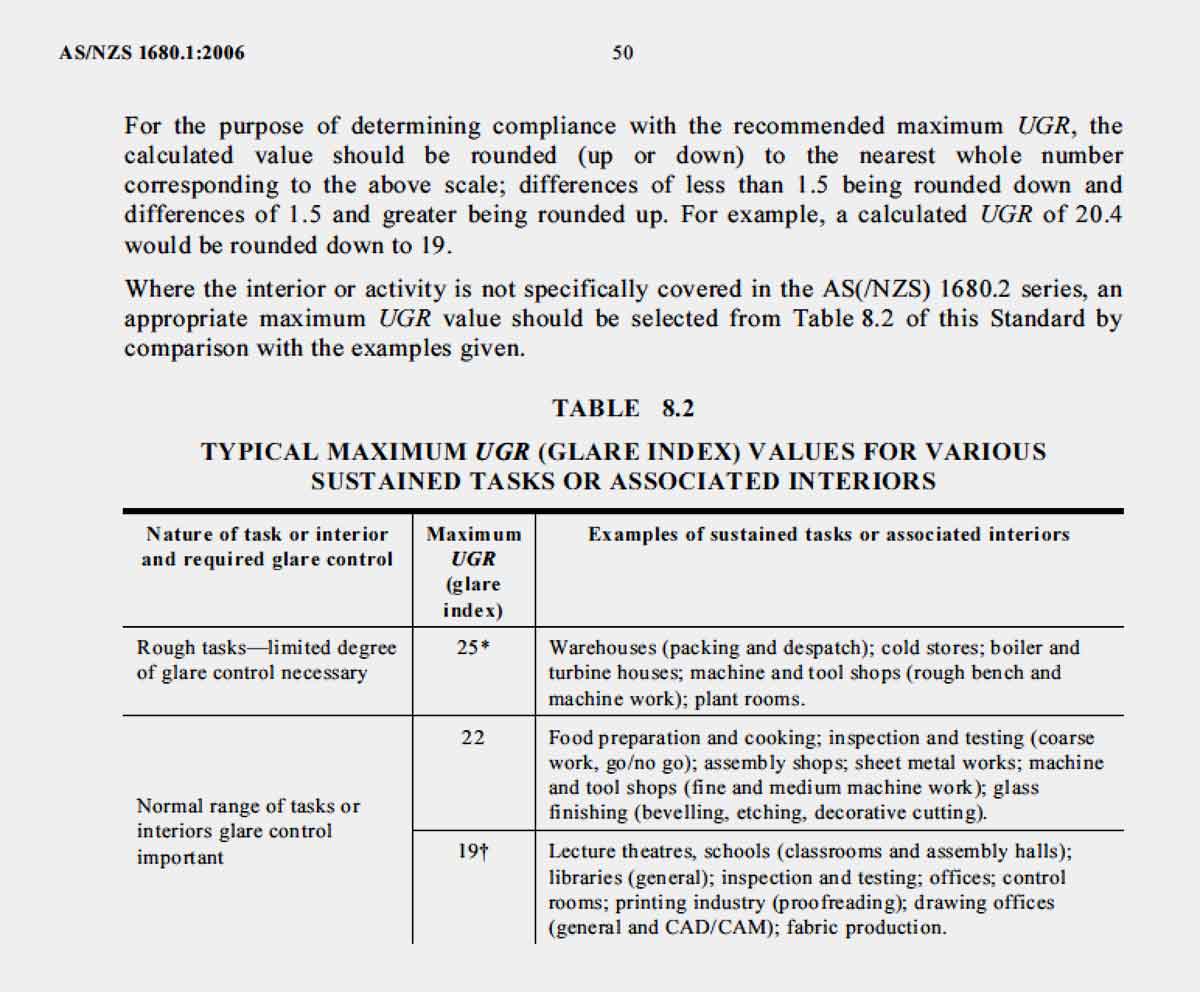While cheap LED lights cause glare, which can lead to headaches, eye strain, fatigue and limit our ability to see, high-quality LEDs – such as Brightgreen’s D700+ Downlights – will have a low glare rating.
Glare is a disruption of sight, for example a reduction of visibility or difficulty seeing, caused by too much illumination being discharge from a light source. It can be caused by both natural and artificial light.
Driving a car provides a good example of both natural and artificial glare. When driving early in the morning or late in the afternoon, the sun can cause glare that makes it difficult to see. Likewise, headlights from an oncoming vehicle can cause glare, especially if the driver forgets to take off their high beams.
The measurement used to determine glare is called UGR and is calculated with a complex formula. UGR is determined by a number of factors, including:
Many companies are now marketing their products as ‘URG 19’; however, this is not very accurate because UGR is dependent on the way your LED lights are installed, for example, the height and spacing.
In Australia, there are standards that mandate the maximum acceptable glare in certain areas, but many LED lights are not compliant with these standards. Lights that cause glare can be harmful, to people and wildlife.

Carparks and outdoor areas are governed by AS 4282 – Control of the obtrusive effects of outdoor lighting. Frequently, LED floodlights are installed that cause glare to neighbouring properties and are not compliant with Australian standards.
Good quality LED floodlights have special forward-throw optics so they can point straight down. As well as reducing glare, this also limits wasted light.
Offices must have a UGR of no more than 19, as per AS 1680 – Interior and workplace lighting. Unfortunately, the majority of LED panels installed in Australian offices are not compliant and have a UGR of 22 or higher.
The best way to achieve low glare is to have a narrow beam angle and special optics. This means the light won’t shine in your eyes unless you are directly below it and looking up.
The video below provides a simple overview of how to choose low-glare downlights.
Our absolute favourite LED light for reducing glare is the award-winning Brightgreen D700+ Downlight. The Brightgreen D700+ features:
For a more comprehensive look at how to reduce glare and create comfortable interiors with lighting, check this out.